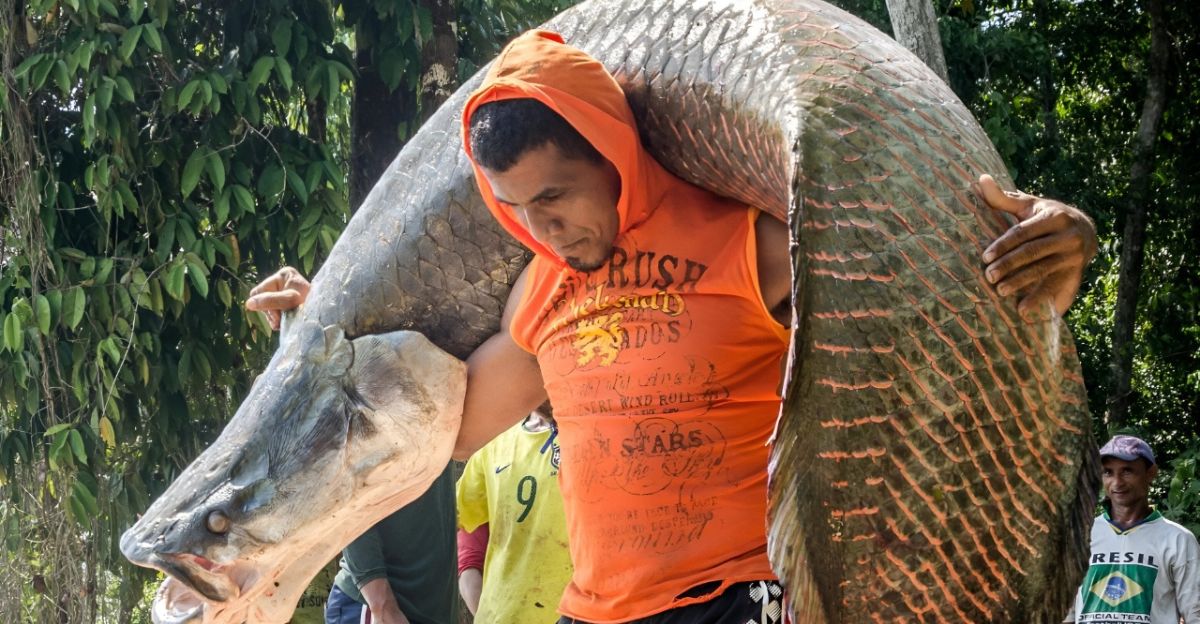
The Amazon’s rivers are as full of beauty as they are danger. Lurking with creatures of all sizes, these waters demand respect. Some use stealth, others raw power, and a few wield toxins or teeth sharp enough to slice bone.
Awareness, distance, and caution are the keys to safely exploring one of Earth’s most extraordinary ecosystems.
1. Black Caiman
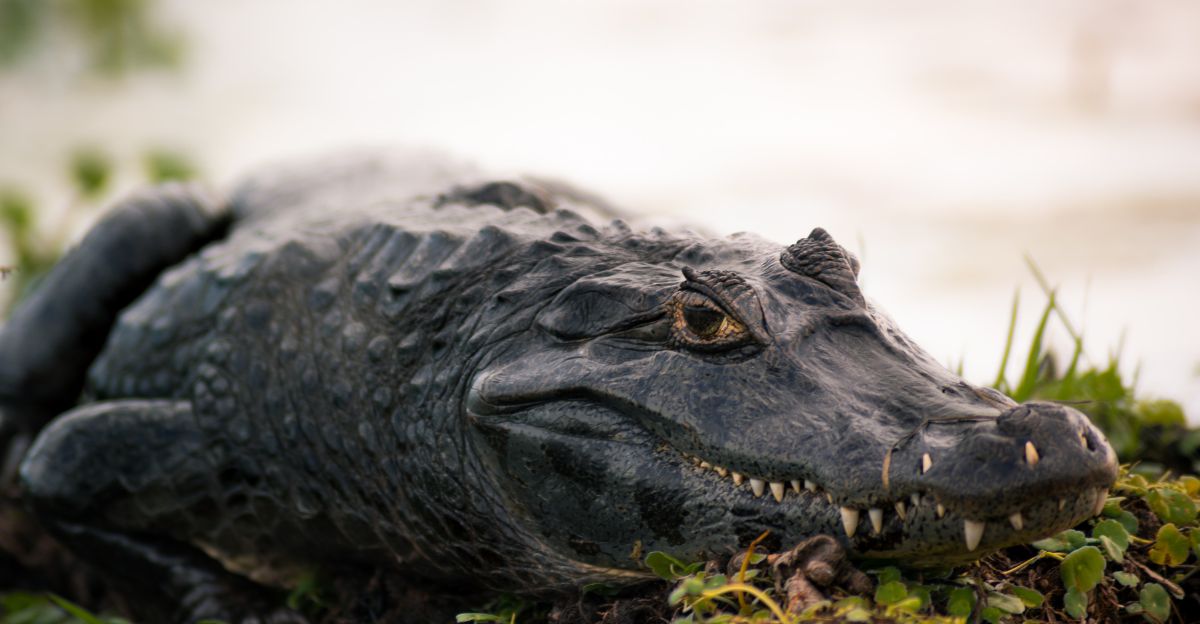
The black caiman is the heavyweight champion of Amazon waters, growing up to 20 feet long and weighing over 1,000 pounds. Think of it as the rainforest’s stealth submarine, slipping through shallow rivers so quietly that prey doesn’t realize the danger until it’s too late.
They eat fish, birds, mammals, and even big predators like jaguars. While attacks on humans aren’t common, they’re often deadly when they do happen. During nesting season, their territorial nature makes them even more aggressive. In flooded forests or calm river bends, they reign supreme. One wrong move and you’re in their hunting zone.
2. Bull Shark

Most people picture sharks in oceans, but the bull shark breaks the rules. These aggressive predators swim hundreds of miles into freshwater rivers, and yes, the Amazon is one of their favorite hangouts. Bull sharks can survive in both salty and fresh water thanks to special adaptations in their kidneys.
Their bite force is among the highest of any shark, powerful enough to crush turtle shells and injure large mammals. The murky river environment gives them the perfect cover for surprise attacks. They’re known to attack humans in low-visibility zones, often near river mouths where fish gather.
3. Green Anaconda
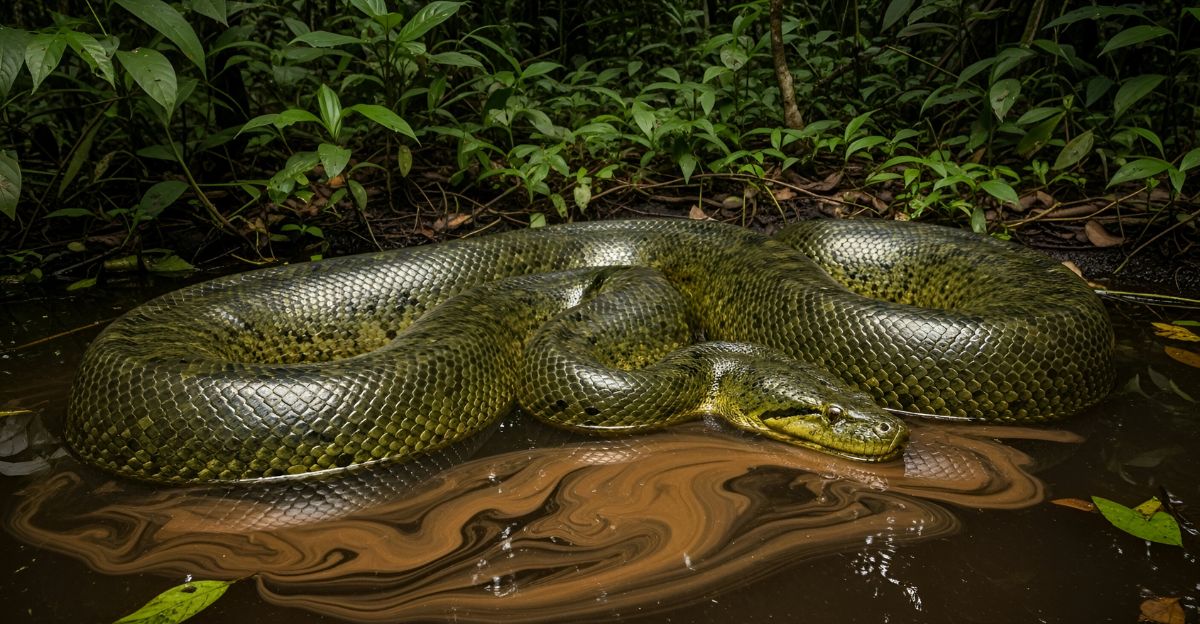
The green anaconda isn’t venomous, it doesn’t need to be. Growing up to 30 feet long and weighing over 500 pounds, it’s the world’s heaviest snake. Instead of biting to kill, it uses raw muscle power, wrapping its thick coils around prey and squeezing until they can’t breathe.
Large anacondas can overpower animals like capybaras, deer, and even caimans. While attacks on humans are rare, surviving one would be tough because of the snake’s crushing strength.
4. Electric Eel

Forget wires, this creature carries its own power supply. The electric eel can unleash jolts of up to 600 volts, enough to stun a horse or knock a human unconscious. It uses electricity to hunt, defend itself, and navigate dark, muddy waters.
Despite its name, it’s more closely related to catfish than true eels. During the dry season, when rivers shrink, electric eels become concentrated in small pools, making encounters more likely. While unlikely to kill an adult outright, repeated shocks can cause paralysis or drowning.
5. Piranhas
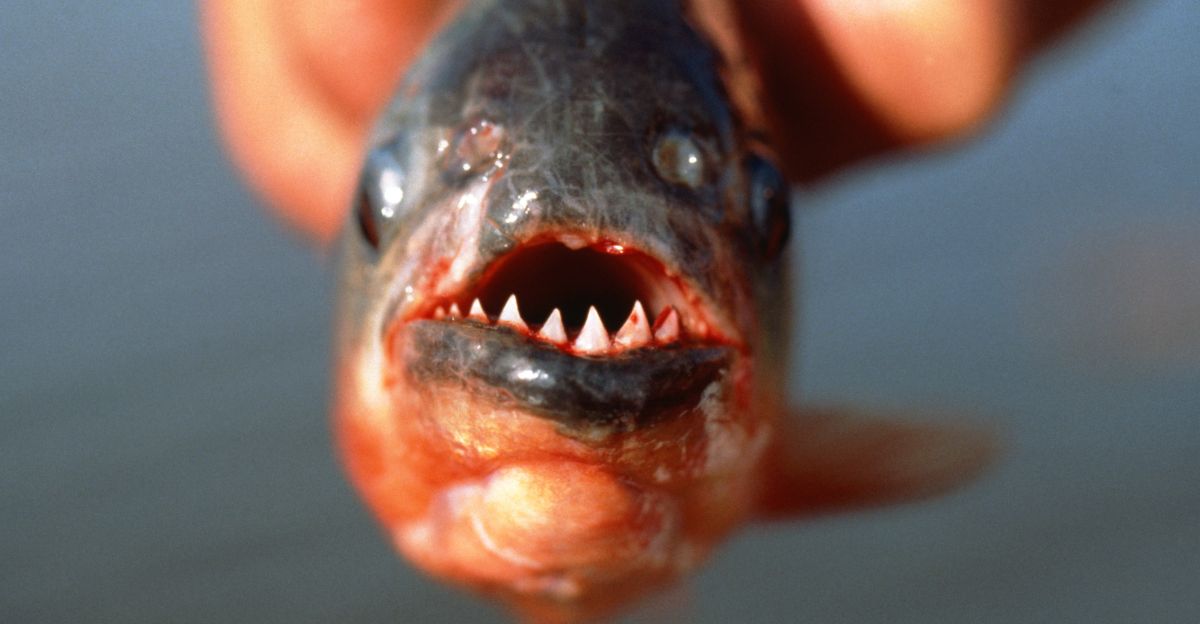
Few creatures cause as much panic as the piranha, but their reputation is slightly exaggerated. That said, their razor-sharp teeth and pack-hunting behavior still make them dangerous, especially in dry seasons when food is scarce.
They can strip flesh from prey in minutes during feeding frenzies. Fishermen sometimes lose fingers or toes by accident while handling nets. When the river runs low, and animals gather at shrinking water holes, tensions rise, and so does feeding intensity.
6. Arapaima (Pirarucu)
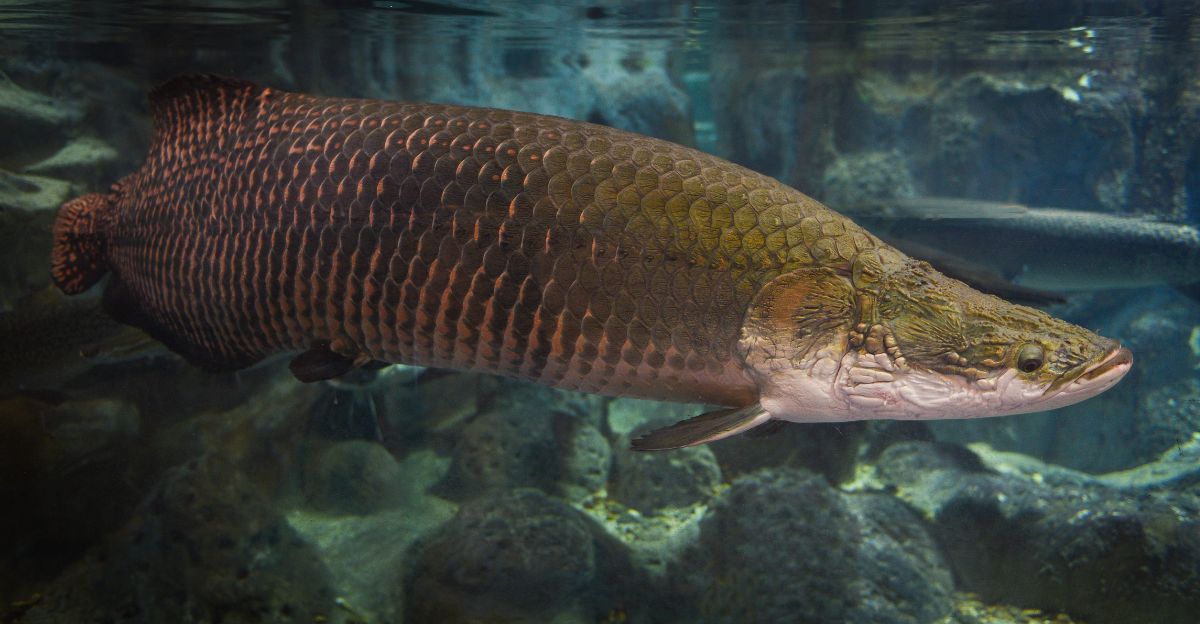
This ancient fish can grow over 15 feet long and weigh more than 220 pounds, making it one of the largest freshwater fish in the world. Covered in armor-like scales that can deflect piranha bites, it leaps out of the water to snag birds or small mammals near the surface.
Fishermen fear its strength, one strike from its head can topple a boat. Though not an intentional threat to humans, its size and territorial behavior can make encounters dangerous.
7. Payara (Vampire Fish)
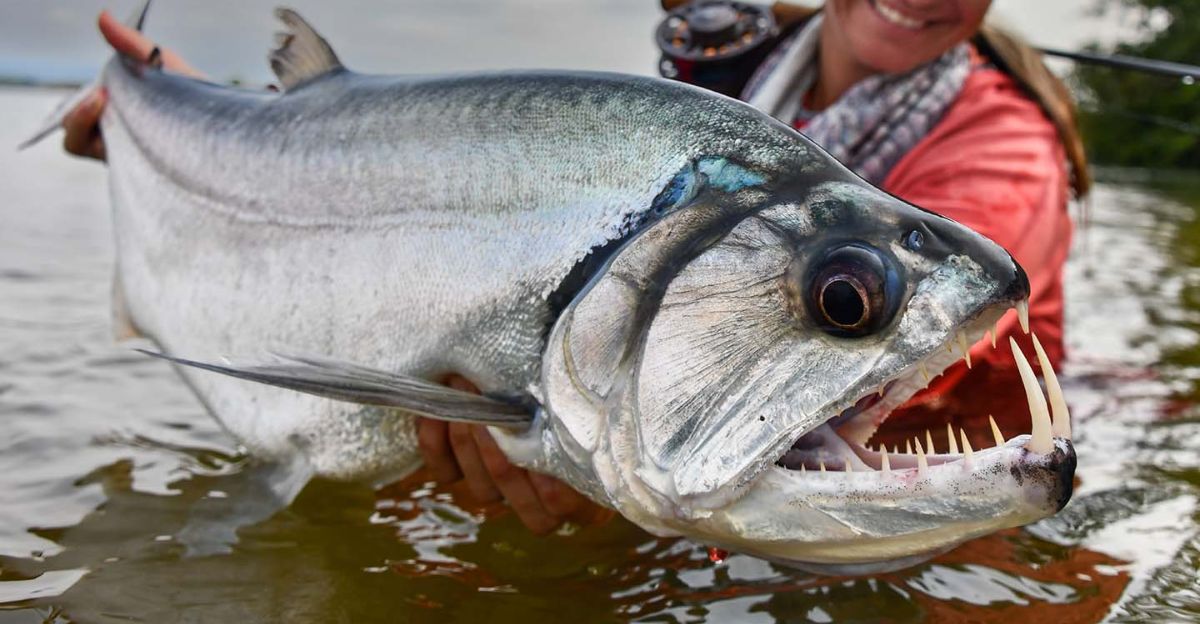
With two ghoulish fangs jutting up from its lower jaw, the payara or vampire fish looks like something straight out of a horror movie. These fearsome predators can reach four feet in length and feast on smaller fish, including piranhas.
The fangs, which can pierce through scales and bone, fit into slots in their upper jaws when they close their mouths. While attacks on people are virtually unheard of, their sinister look and predatory precision have earned them a spooky reputation.
8. Giant River Stingray
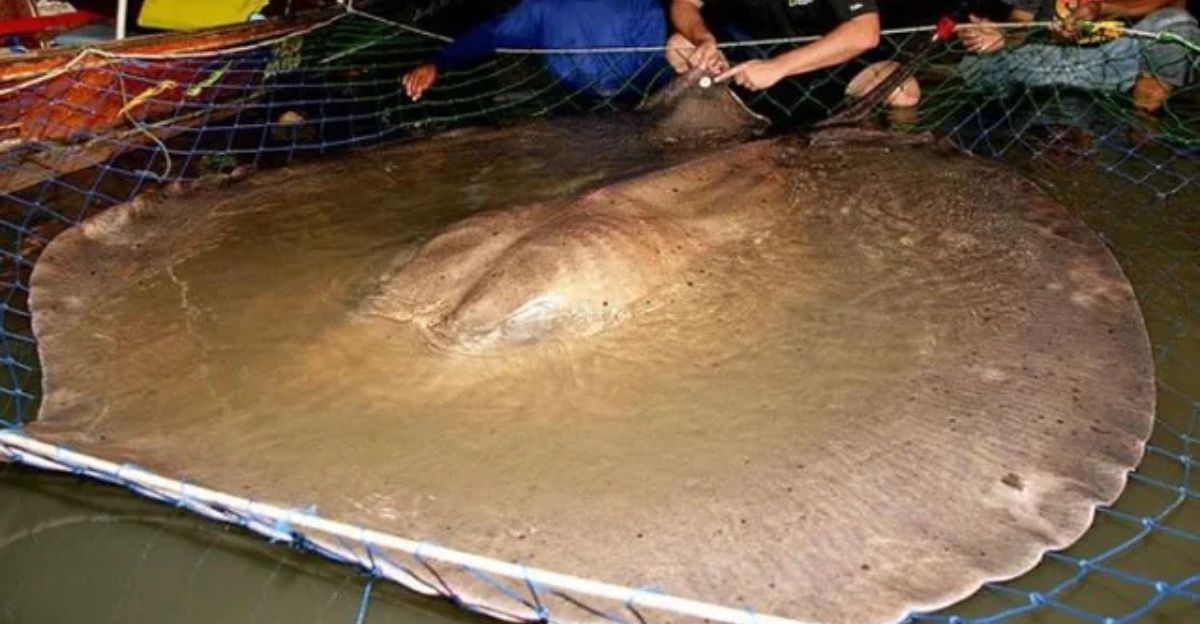
The giant river stingray glides silently along riverbeds, its flat body blending into the muddy bottom. But beneath that calm exterior lies a weapon, a venomous tail barb up to 15 inches long that delivers excruciating pain. Some rays can be more than 13 feet across.
When stepped on or threatened, they lash out quickly. The murky waters of the Amazon make such encounters hard to avoid. Moving slowly and shuffling feet near the bottom helps prevent surprise strikes.
9. Amazon River Dolphin
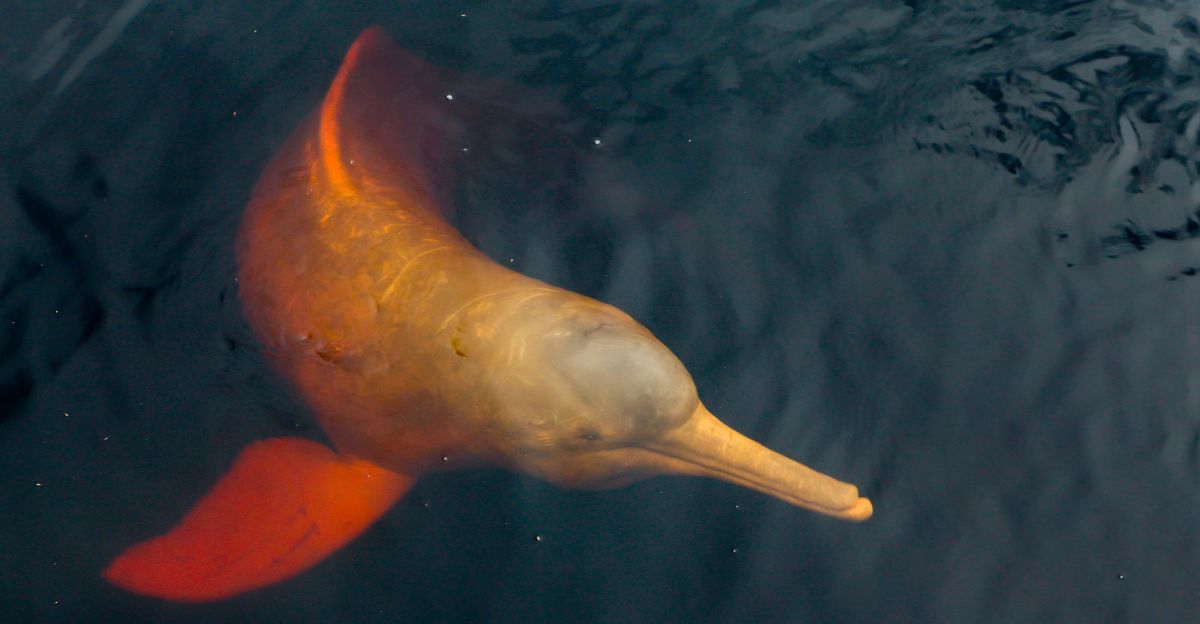
The pink dolphin, or boto, is one of the Amazon’s most enchanting creatures, until it’s not. Known for their intelligence and curiosity, these dolphins are playful, sometimes to the point of aggression. Their 28 pairs of strong molars can inflict serious bites.
Botos sometimes ram small boats or tug at fishing lines. In local legends, they’re seen as shape-shifters, both mystical and mischievous. While attacks are rare, the risk is real, especially when people try to hand-feed them or approach calves.
10. Red-Bellied Piranha

Among all piranhas, the red-bellied species has the fiercest reputation. When hungry or provoked, they attack in synchronized, lightning-fast episodes. Each fish tears away a piece of flesh, and within seconds, little may remain of the prey.
Most of the time, they scavenge or eat insects and small fish. But the scent of blood or frantic splashing can trigger their instinctive frenzy. They’re most dangerous in shallow, warm waters where food competition peaks.
11. Candiru
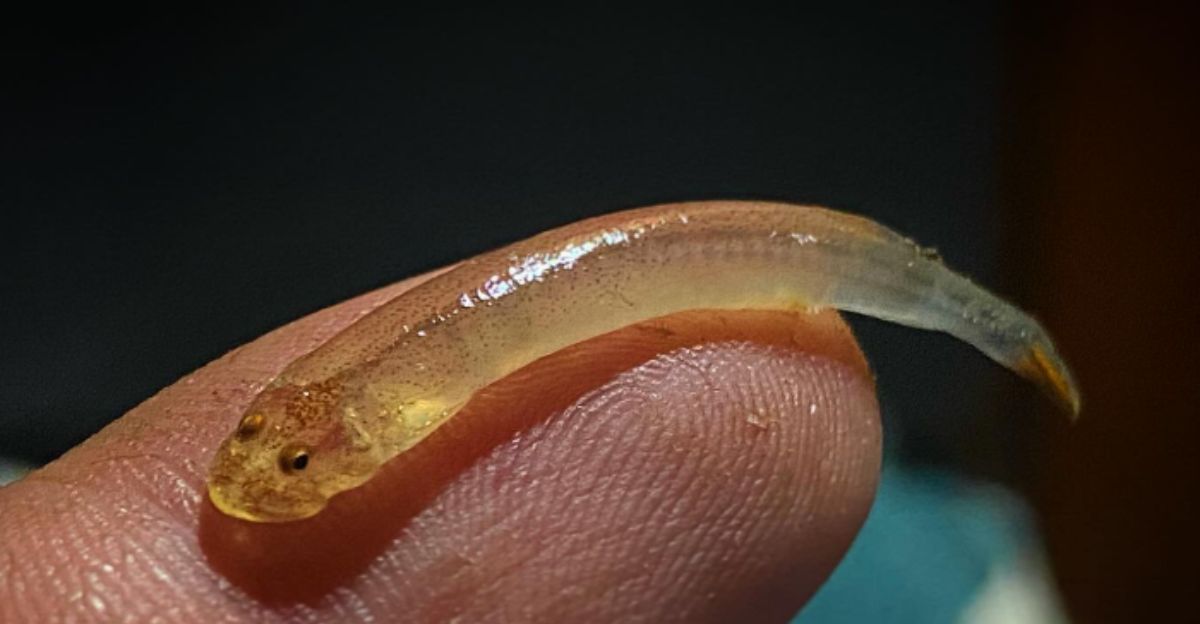
The candiru’s legend is bigger than its body. This minuscule catfish measures just a few inches long but has gained infamy for allegedly invading bodily openings. While most tales are exaggerated, it can parasitize other fish by entering their gills and feeding on blood.
Rare medical records confirm human cases, usually involving accidental contact in shallow water. Their attraction to urea means they’re drawn towards streams of waste in the water, a trait that fuels local cautionary tales.
12. Spectacled Caiman
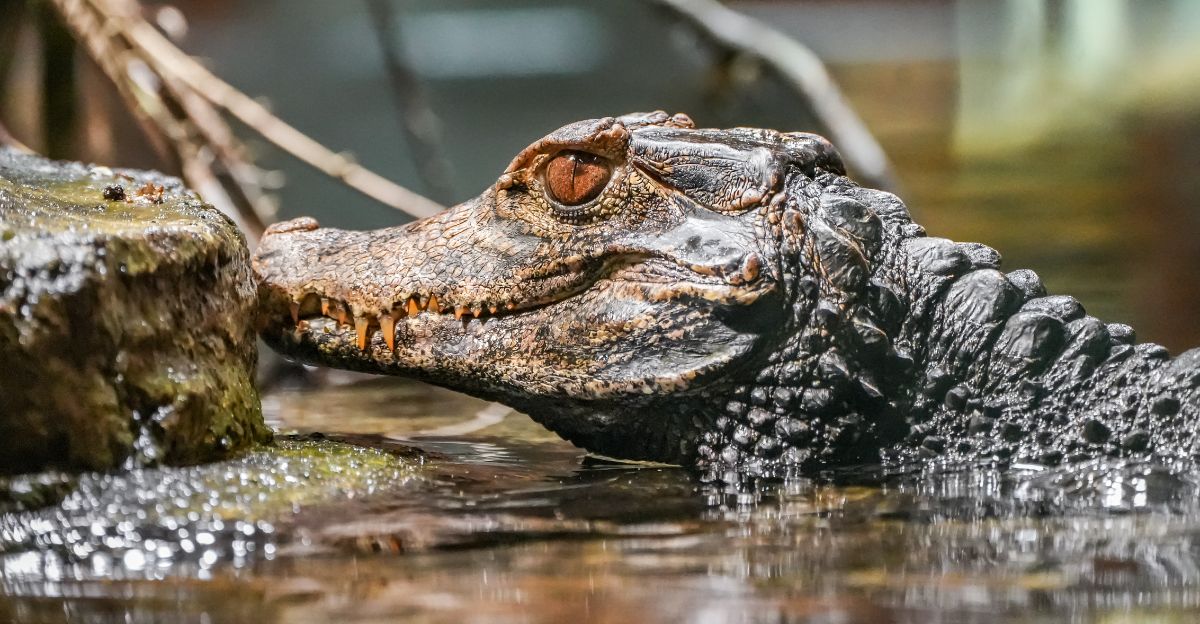
The spectacled caiman may be smaller than the black caiman, averaging 6–8 feet, but its adaptability and aggressive defense of nesting areas make it dangerous. Found throughout the Amazon’s freshwater systems, it often lashes out if humans get too close.
They prey on fish, birds, and mammals but will confront threats directly, sometimes using rapid lunges from the shallows. Villagers who inadvertently step near a nest often find themselves chased into deeper waters.
13. Orinoco Crocodile
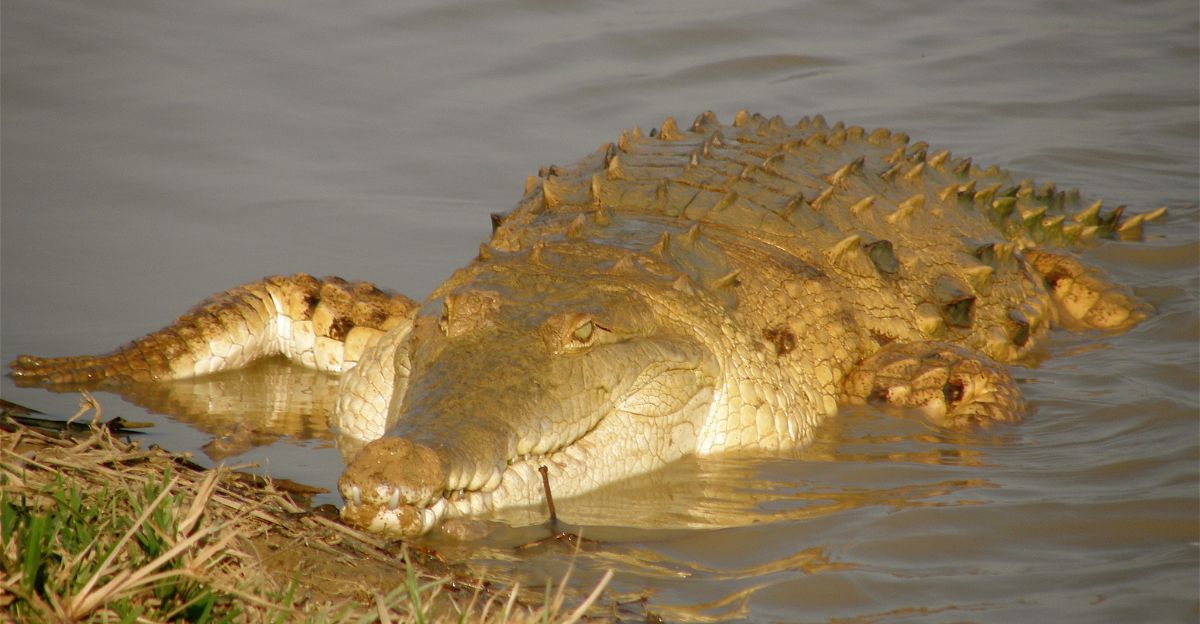
Primarily native to the Orinoco basin, this crocodile occasionally drifts into Amazon tributaries. Growing up to 20 feet, it matches the black caiman in size and ferocity. With a skull built for crushing bone, it’s an apex ambush predator.
While rare, encountering one often happens near deep channels where prey is plentiful. They’re classified as critically endangered, meaning most humans will never see one, but in their territory, respect is survival.
14. Poison Dart Frog

This tiny amphibian, often no bigger than a paperclip, carries one of nature’s most potent toxins on its skin. Found near watery forest floors, some species have enough poison to kill 10 humans. Indigenous groups have long used these toxins on hunting darts.
Poisoning occurs through skin contact or ingestion, making them dangerous to curious explorers. While beautiful, their neon skin is nature’s ‘do not touch’ sign.
15. Freshwater Stingray
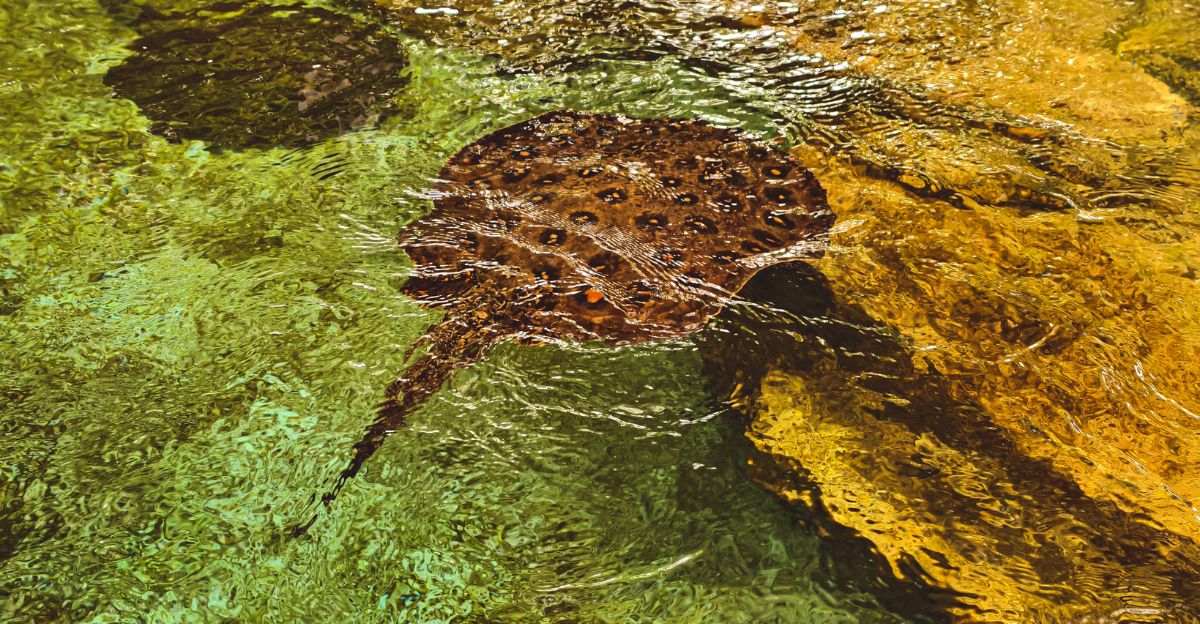
Though smaller than giant river stingrays, these species still carry venomous tail barbs capable of inflicting severe injury. Most incidents occur when swimmers step on rays hidden under silt.
Avoid shuffling through soft-bottomed channels barefoot. Their camouflage makes them almost impossible to spot until it’s too late.
16. Amazonian Manatee
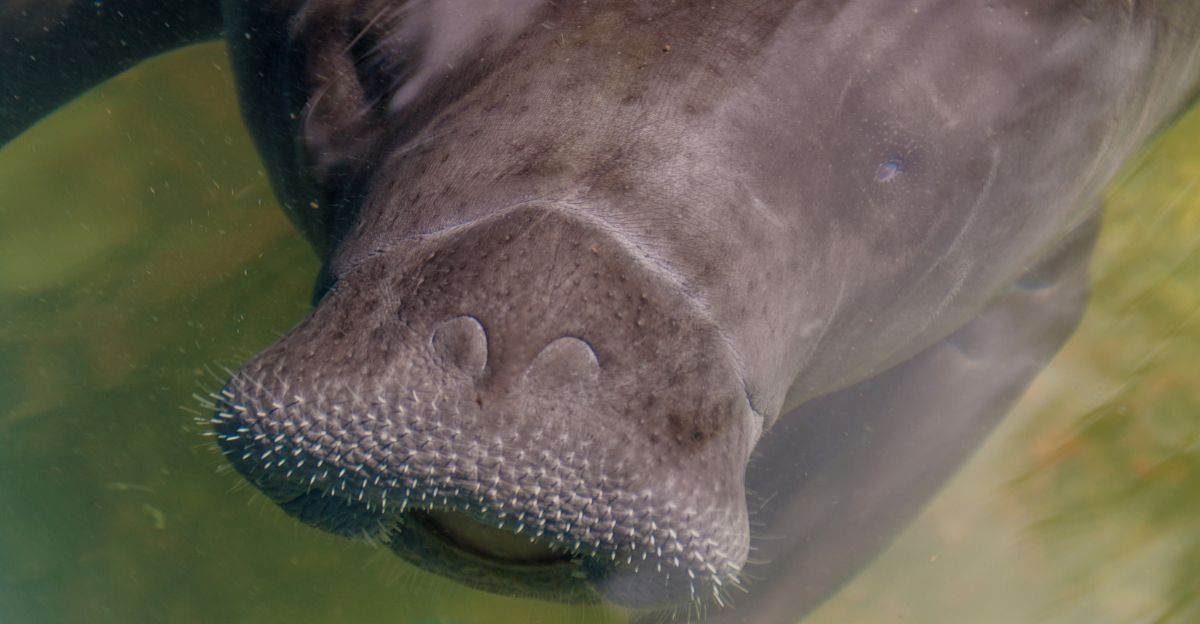
The Amazonian manatee is a peaceful herbivore, gliding through rivers at a slow pace. But weighing up to 1,200 pounds, it can unintentionally harm swimmers by bumping into them or surfacing under boats.
Seen mostly in quiet backwaters, they are vulnerable to hunting, but still impose risks when startled in close quarters.
17. Mata Mata Turtle
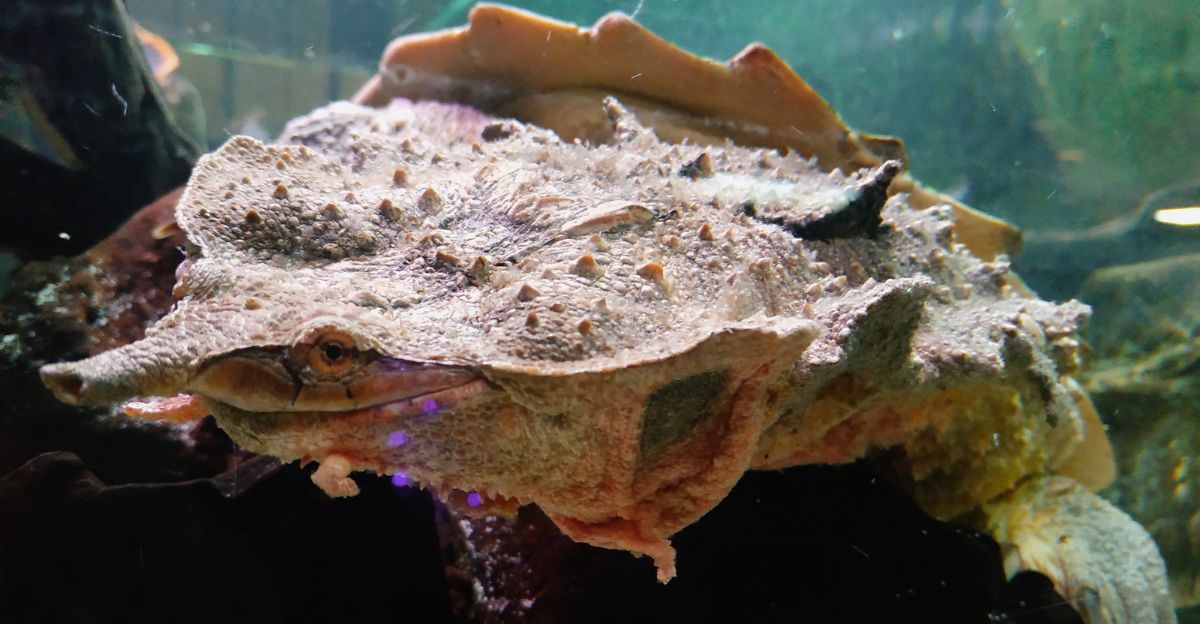
This bizarre, flat-headed turtle looks like a pile of leaves and sticks—a camouflage that allows it to ambush unsuspecting fish. While not aggressive toward humans, its powerful bite can injure anyone attempting to handle it.
Found in slow streams, it snaps with lightning speed once something swims close to its mouth.
18. Snakehead Fish
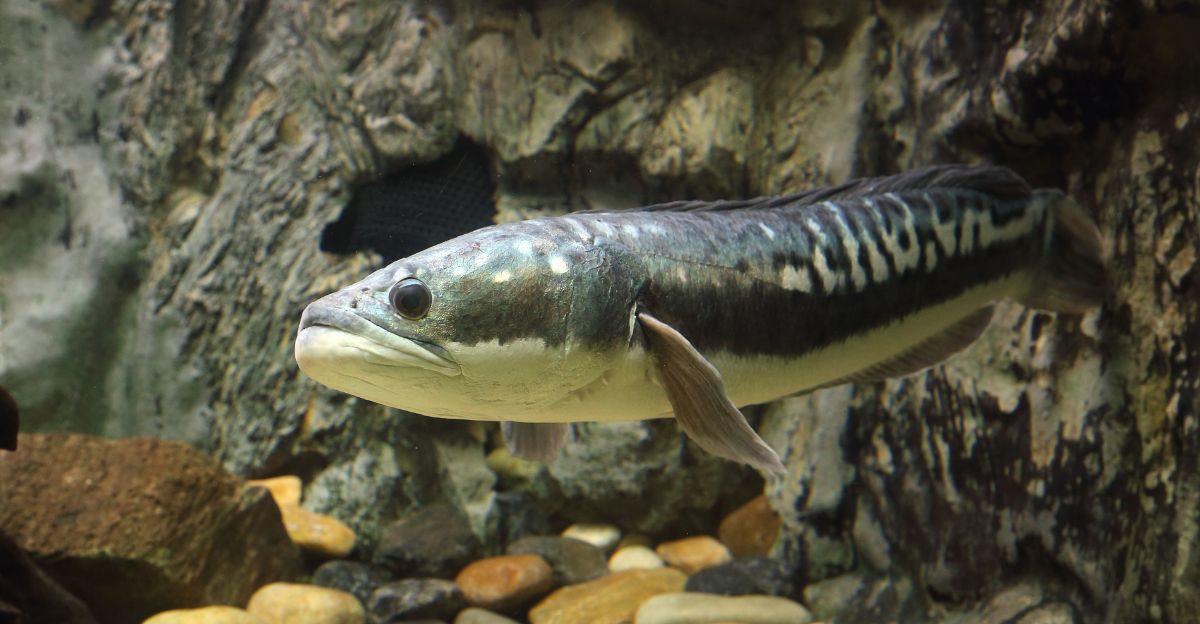
This invasive predator is known for razor-sharp teeth and relentless hunting. Snakeheads are territorial, often attacking anything that intrudes on their space.
Fishermen risk bites when removing them from nets. Their adaptability makes them a growing problem when introduced, altering food chains.
19. Giant Otter
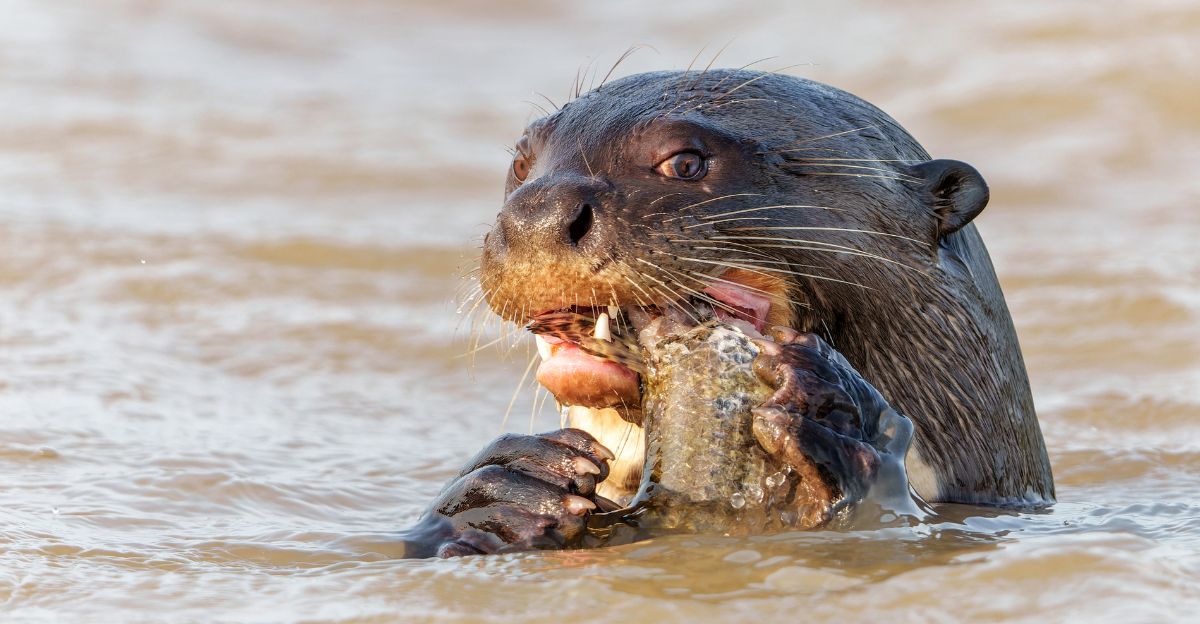
At up to six feet long, giant otters are social hunters with a strong territorial instinct. They’ve been known to chase away large predators, including caimans.
Rarely, when humans disturb their dens, they attack with surprising ferocity.